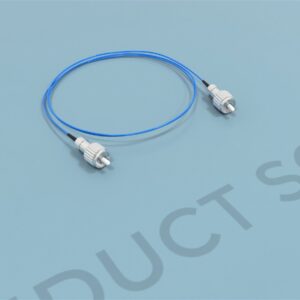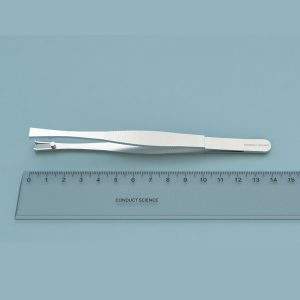$1,990.00
The three-chamber paradigm is a well-established method for assessing spatial and non-spatial learning, as well as memory in zebrafish. Designed by MazeEngineers, this watertight apparatus features a dark panel that covers one side of each compartment, serving as a visual cue to aid in right/left discrimination. While primarily utilized for learning and memory studies, it is also suitable for conducting a range of toxicity experiments.

MazeEngineers empowers preclinical neuroscience research with meticulously designed, customizable behavioral apparatuses. From manual classic mazes to fully automated smart systems, we provide the tools scientists need to capture high-quality, reproducible data for studies on learning, memory, anxiety, and depression.



bool(false)
Features |
Total Width: 22cm |
Total Length: 44cm |
Total Height: 30cm |
Middle chamber Width: 22cm |
Middle chamber Length: 18cm |
Door: Height: 12cm. Width: 10cm. |
Choice Area: Width: 22cm. Length: 13cm |

The three-chamber paradigm is widely utilized for assessing both spatial and non-spatial learning, as well as memory in zebrafish (D. Arthur, E.D. Levin, 2001).
This task has been instrumental in elucidating the molecular mechanisms underlying cognitive functions in zebrafish.
Subjects are trained to navigate in a specific direction upon entering the central compartment of the chamber for spatial learning, or to approach a specific color regardless of its location for non-spatial learning.
Additionally, the three-chamber maze can evaluate reversal learning using aversive stimuli, distinguishing it from the traditional T-maze by incorporating characteristics of aversive stimulus (Levin ED, Cerutti DT, 2009).
Arthur and E.D. Levin developed the original version of the three-chamber maze, where subjects must choose between the right and left compartments. Correct choices are rewarded by expanding the swimming area, while incorrect choices lead to aversive stimuli reducing the swim area (Bailey JM et al., 2015).
Spatial discrimination learning in zebrafish aids in differentiating response latency from choice accuracy, and the three-chamber task is effective for assessing acute and long-term drug effects based on these measures of accuracy and response latency.
The test apparatus comprises a Plexiglas maze integrated within a fish tank measuring approximately 22 cm (width) by 44 cm (length) by 30 cm (height).
Within the tank, three equally sized compartments are delineated: a central entry compartment for subjects and two adjacent side compartments for subsequent movement (Levin ED et al., 2003).
To aid in right/left discrimination, the Plexiglas maze features a dark panel along one side of each compartment, serving as a visual cue.
Vertical sliding windows measuring approximately 12 cm (height) and 10 cm (width) are situated on either side of the central compartment, leading to the right and left compartments.
These sliding partitions are mounted on rails to control subjects’ movement as a form of punishment, capable of being positioned as close as 2 cm from the tank’s end wall.
The purpose of the three-chamber paradigm is to evaluate spatial and non-spatial learning behaviors in zebrafish in a vehicle-treated control vs. disease model/intervention group, by assessing their choice accuracy and response latency in the three-chamber maze.
Zebrafish are housed in tanks with recirculating distilled water supplemented with Instant Ocean salt and vitamins.
The water temperature is carefully maintained around 28.5 °C, and the zebrafish follow a 12-hour light and dark cycle.
The tanks are equipped with adequate aeration and use recirculating deionized water for optimal conditions. Zebrafish are fed flakes or brine shrimp twice daily.
Behavioral tests are conducted exclusively during the light phase, typically between 8 a.m. and 5 p.m., to ensure consistent testing conditions.
Initially, each subject is introduced into the central compartment of the three-chamber maze. After a one-minute acclimation period, both sliding doors are simultaneously opened. Half of the subjects are trained to navigate to the right, while the other half are directed towards the left compartment.
Upon making a correct choice to the right, the sliding window closes, granting the subject additional swim space for 30 seconds as a reward. Conversely, an incorrect choice results in punishment, restricting swim space to 2 cm from the end wall for 10 seconds.
If a subject fails to make a choice within 20 seconds, a fishnet is waved across the central chamber alongside the doors, acting as a threatening stimulus until a decision is made.
Choice accuracy and response latency are assessed across an average of 5 testing sessions and recorded accordingly.
Non-spatial learning involves tasks such as color discrimination.
In this setup, colored inserts are placed at the ends of each adjacent compartment. To challenge the subjects’ color discrimination abilities, the orientation of these inserts is randomized, encouraging the subjects to select a specific color irrespective of its location.
Both spatial and non-spatial reversal learning can be assessed using this paradigm. Initially, subjects are trained to navigate towards one side (spatial discrimination) or color (non-spatial discrimination). Subsequently, the contingencies are reversed to evaluate zebrafish behavior in reversal learning scenarios (Levin ED, 2011).
The initial rendition of the maze featured a rectangular shape (D. Arthur, E.D. Levin, 2001).
A more recent iteration, developed by Eddins et al. in 2009, focuses on studying the impact of nicotine on zebrafish learning.
The testing apparatus now consists of a semi-cylindrical pipe unit divided into three chambers: the start chamber, right choice chamber, and left choice chamber. Plexiglas rods extend through both sides of the apparatus.
Rotatable plastic partitions are affixed to the inner side of these rods, facilitating subjects’ entry into the chambers. These partitions are circular and positioned vertically, mounted on rails approximately 13 cm in length. These rails enable free movement from the central chamber to the apparatus’s end wall.
In the original version, a fishnet was used as a stimulus, whereas this updated model employs a plastic beaker dropped just above the start chamber to provoke a response.
Sample data is illustrated by plotting spatial, non-spatial, and reversal learning against response latency in both the control and drug-administered groups. Analysis of the graph shows that the group treated with the drug [Chlorpyrifos (CPF)] exhibits delayed responses, indicating increased response latency.
One of the notable advantages of the three-chamber task is its ability to facilitate repeated testing due to the subjects’ learning capabilities.
Compared to the two-chamber shuttle box, the three-chamber task eliminates confusion between fish activity and choice accuracy, as the fish must cover equal distances for both correct and incorrect choices.
However, this task does not correlate with either active or passive avoidance tasks typically performed in two-chamber shuttle box experiments.
This method is valuable for evaluating the impact of various drugs on the learning behavior of zebrafish. For example, it has been used to investigate the molecular mechanisms underlying nicotine’s effects on learning (Eddins et al., 2009) and assess CPF-induced developmental and behavioral toxicity (Levin ED et al., 2003).
As response latency is recorded manually, therefore skilled personnel supervision is necessary for the accomplishment of this task, otherwise the interpreted results may vary.
Arthur, E.D. Levin, Spatial and non-spatial discrimination learning in zebrafish, Anim. Cogn. 4 (2001) 125– 131
Levin ED, Cerutti DT. Behavioral Neuroscience of Zebrafish. Methods of Behavior Analysis in Neuroscience. 2nd edition (2009)
Bailey JM, Oliveri AN, Levin ED. Pharmacological analyses of learning and memory in zebrafish (Danio rerio) Pharmacol. Biochem. Behav. 2015
Levin ED, Chrysanthis E, Yacisin K, Linney E. Chlorpyrifos exposure of developing zebrafish: effects on survival and long-term effects on response latency and spatial discrimination. Neurotoxicol Teratol. 2003; 25:51–57
Levin ED. Zebrafish assessment of cognitive improvement and anxiolysis: filling the gap between in vitro and rodent models for drug development. Rev Neurosci. 2011; 22:75–84
Eddins D., Petro A., Williams P., Cerutti D. T. & Levin E. D. Nicotine effects on learning in zebrafish: the role of dopaminergic systems. Psychopharmacology (Berl). 202, 103–109 (2009)
There are no questions yet. Be the first to ask a question about this product.